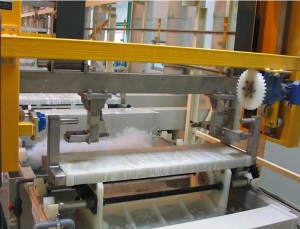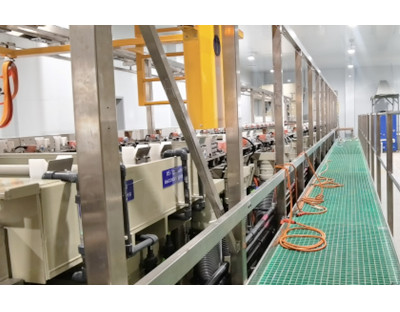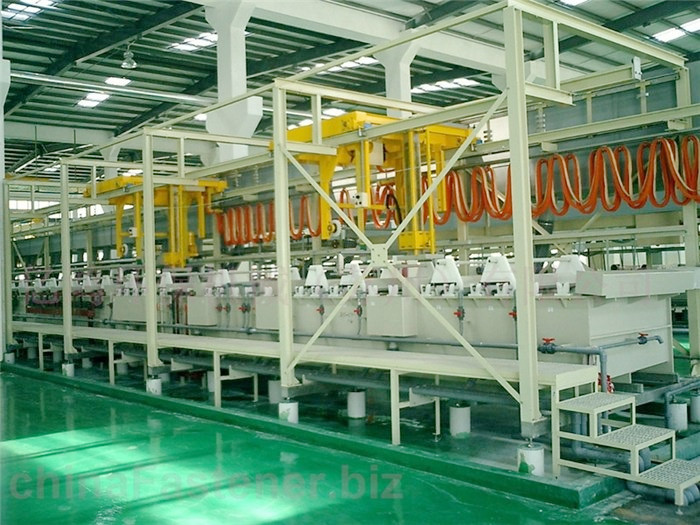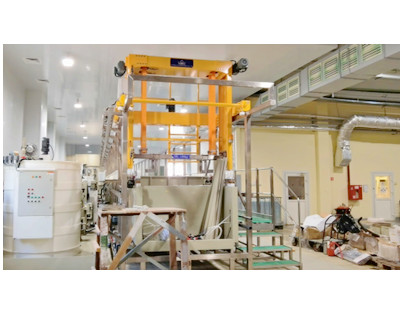Preface
Jigs play a very important role in the production of electroplating, as they have a significant impact on the quality of electroplating. However, the quality, maintenance, and management of Jigs are often overlooked by people.
For some professional electroplating processing enterprises, due to the wide variety of products and frequent changes in electroplating products, the use and management of on-site Jigs tools are chaotic, leading to the misplacement and disorderly placement of Jigs tools of different plating types, seriously affecting production progress.
Key Points for Designing Electroplating Jigs
(1) Jigs should be made of materials with a wide range of sources, low cost, good conductivity, stability in solution, and insolubility.
(2) The conductive part of the Jigs device should have sufficient cross-sectional area to allow the required current of the parts to pass smoothly without generating heat. Extra large parts, stainless steel parts, and castings should have as many electrical contact points as possible to ensure good conductivity.
(3) Jigs should have sufficient mechanical strength and not deform during surface treatment.
(4) Complex hooks and support hooks should be evenly distributed. The uniform distribution of the bracket can prevent parts from burning due to excessive current concentration, while achieving uniform coating and effective utilization of space, improving production efficiency.
(5) The main body of the Jigs device should be welded as much as possible, avoiding the use of screws or other methods for connection. When welding, use gas welding or tin welding. When soldering, choose a slightly higher power soldering iron to prevent false soldering.
(6) The overall dimensions of the Jigs device should be comprehensively considered based on the size of the parts, the volume of the plating tank, and the power of the power supply.
(7) After the electroplating product is installed, try to avoid the phenomenon of tank liquid retention and air pockets as much as possible.
(8) The insulation effect of the hanger largely determines the quality of the coating.
Precautions for using Jigs tools
(1) Remove the coating before use. Some coatings (such as galvanized coatings) may dissolve during the pre-treatment process and must be removed before use, otherwise they may contaminate the pre-treatment tank solution.
(2) Clean before use. Cleaning can remove dirt from the fixtures and enhance the adhesion of the coating.
(3) Dedicated to specialized tools. In order to prevent the retention of plating solution at the binding gap, sand hole, weld seam, etc. of the Jigs device from being carried from one plating bath to another, resulting in cross contamination, the Jigs device should be dedicated as much as possible.
(4) The contact area between the hanger and the parts should be selected as non important as possible. On the premise of ensuring conductivity, the contact area should be as small as possible to minimize the impact on the coating of the parts.
(5) The parts should be firmly hung on the Jigs tool and should not loosen or fall off during the entire processing process.
(6) Jigs with inner hole electroplating must be separated from the positive and negative poles.
(7) The installation position of the parts should be conducive to gas discharge and avoid the formation of air pockets in the concave parts.
(8) When installing parts, the protruding part of the tip should not face the anode, and the parts should not be covered or overlapped with each other.
(9) Parts of the same material should be installed on the same hanger, and it is not allowed to mix parts of different materials on the same hanger.
(10) When using, attention should be paid to handling with care and avoid damaging the insulation layer or wrapping layer as much as possible. Otherwise, it may cause the Jigs tool to grab power from the parts, causing local plating failure or roughness of the parts.
(11) After the hanger is used, the corresponding removal solution or polishing method should be used to remove the coating, film layer, or oxide from the electrical contact area of the hanger to ensure good conductivity.
(12) After using the Jigs device for a period of time, the insulation layer should be inspected. If defects such as cracks, peeling, or detachment are found in the insulation layer, insulation treatment should be carried out again.
Electroplating Hanger Management
The management of electroplating Jigs tools often faces the following problems:
(1) There are a large number of electroplating pendants, which occupy a large storage space;
(2) Low frequency of use of specialized Jigs tools;
(3) The classification of electroplating pendants is complex, the placement is chaotic, and it is difficult to find;
(4) Many Jigs devices have similar shapes and often use the wrong Jigs device;
(5) Due to the lack of accurate quantities of different fixtures, production arrangements can only be based on experience and impressions.
Solutions to the problems in the management of electroplating fixtures:
(1) Mark the electroplating Jigs tools properly;
(2) The process documents should clearly specify the Jigs tool number used for the parts;
(3) Classify and store on-site electroplating fixtures, each type of fixture must have a dedicated storage location and clear markings, and be classified according to the frequency of use;
(4) For classified Jigs, plan corresponding storage areas on site and immediately put them back in designated locations after use;
(5) Due to the large space occupied by electroplating fixtures, it is recommended that some large and medium-sized electroplating enterprises refer to the design concept of three-dimensional warehouses to plan the storage of fixtures;
(6) The storage of Jigs tools adopts a combination of Jigs and box placement, and should be placed compactly to effectively utilize space.
(7) A detailed database must be established for internal fixtures within the enterprise, with accurate data statistics for each type of fixture, which is of great help for production scheduling.
conclusion
In order to improve the quality and production efficiency of electroplating products and extend the service life of the Jigs device, it is necessary to design the Jigs device before electroplating, use the Jigs device during electroplating, and daily maintenance and management of the Jigs device after electroplating.








 Mar. 07, 2022
Mar. 07, 2022 





